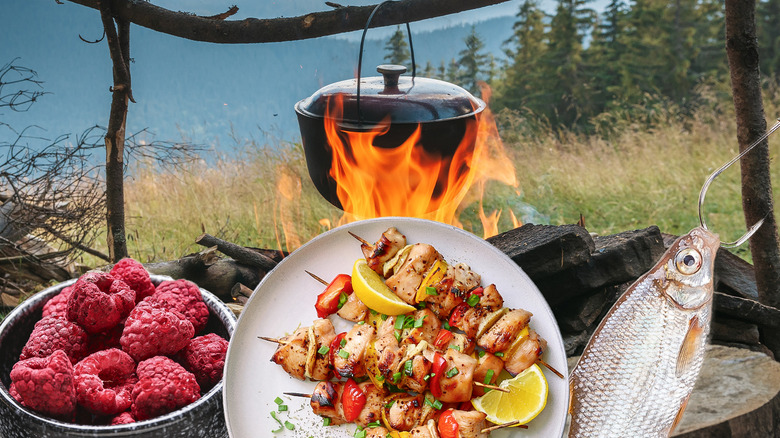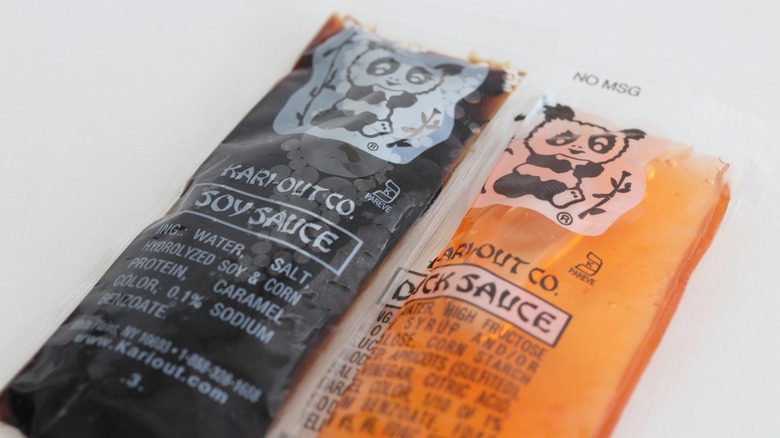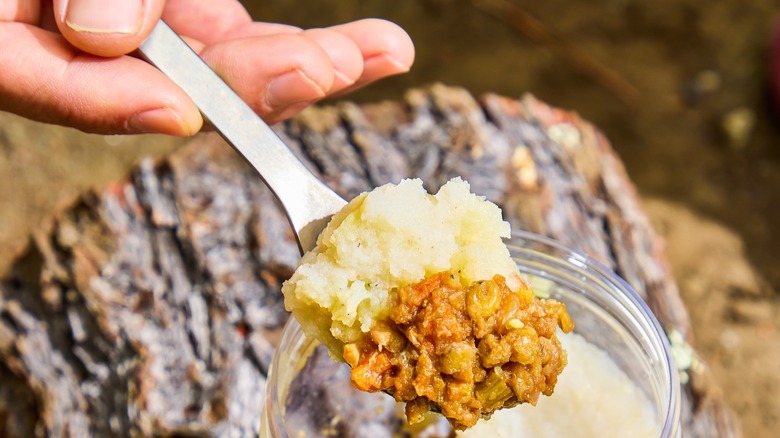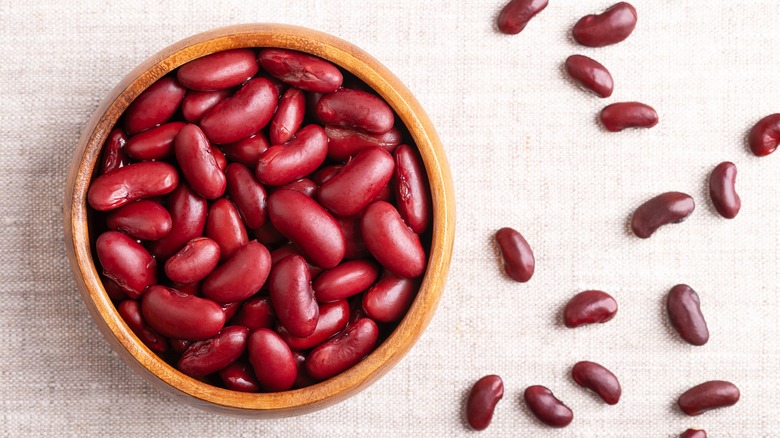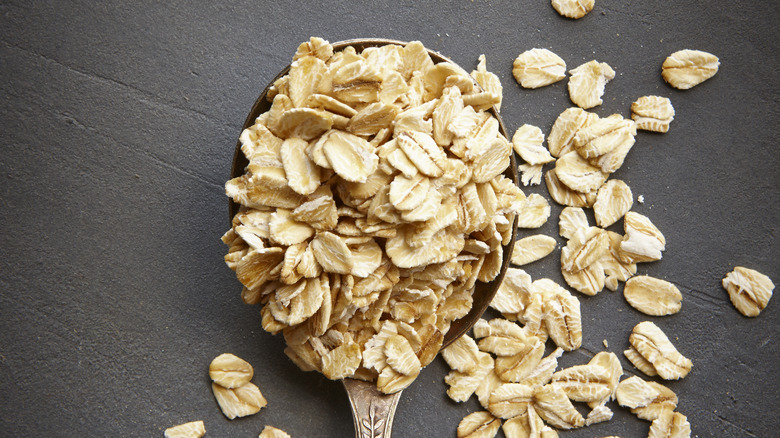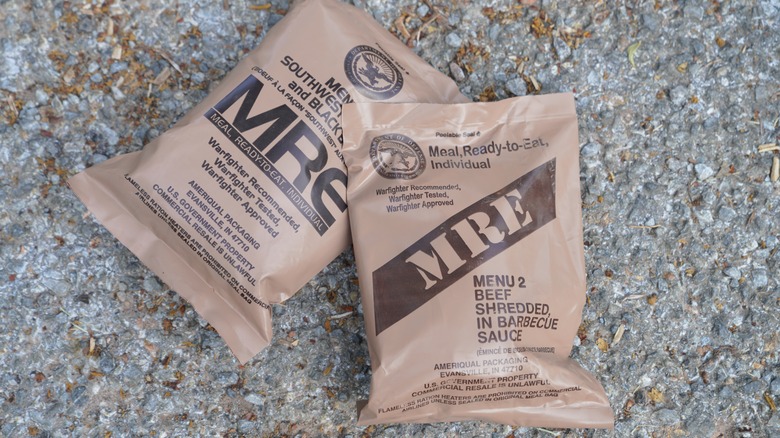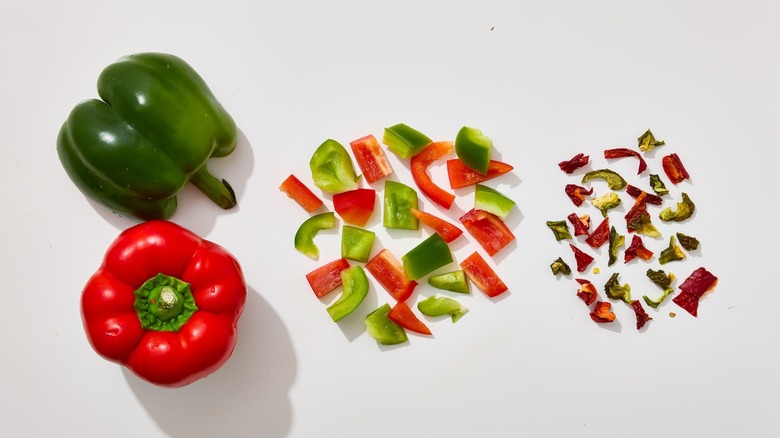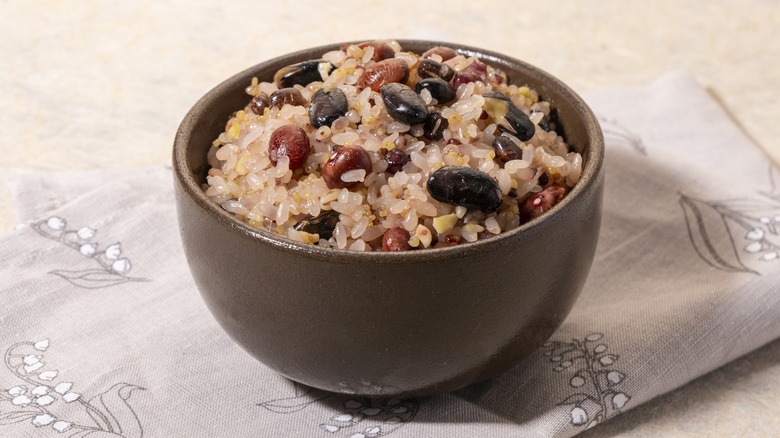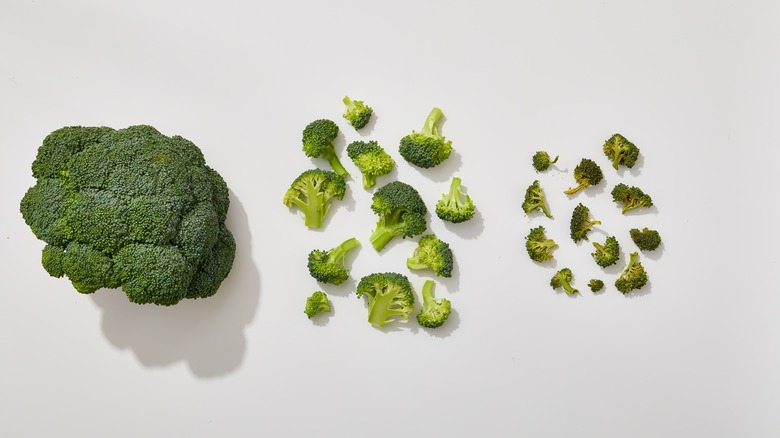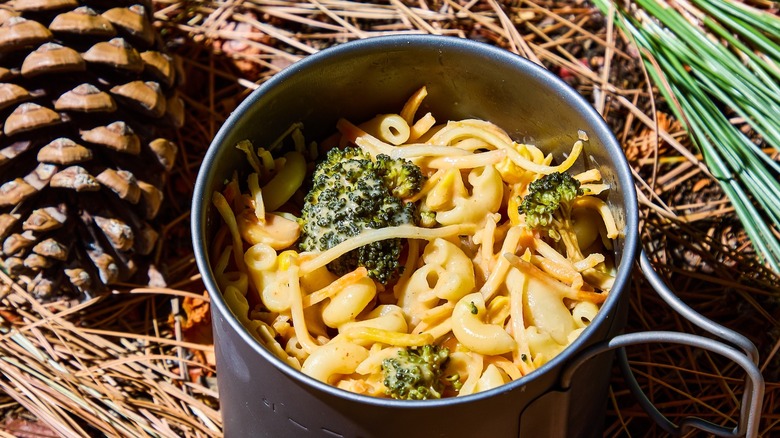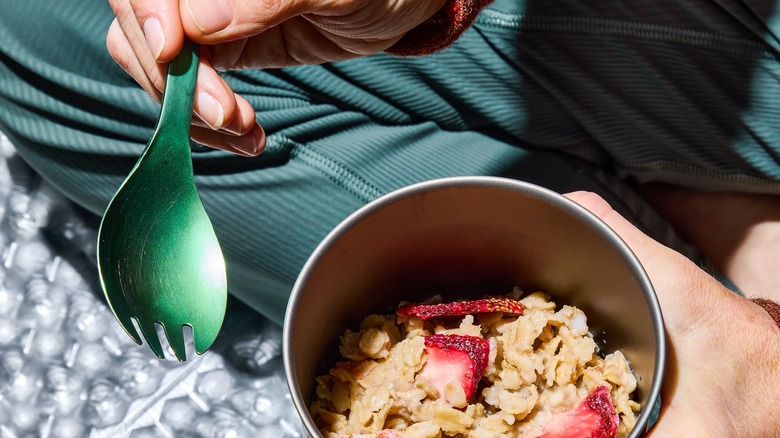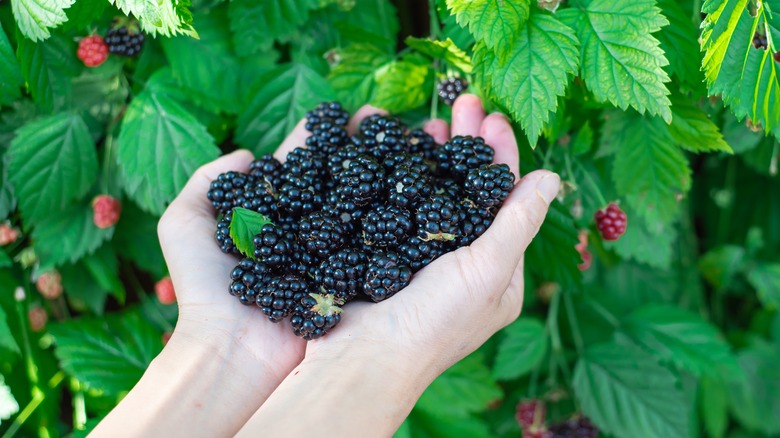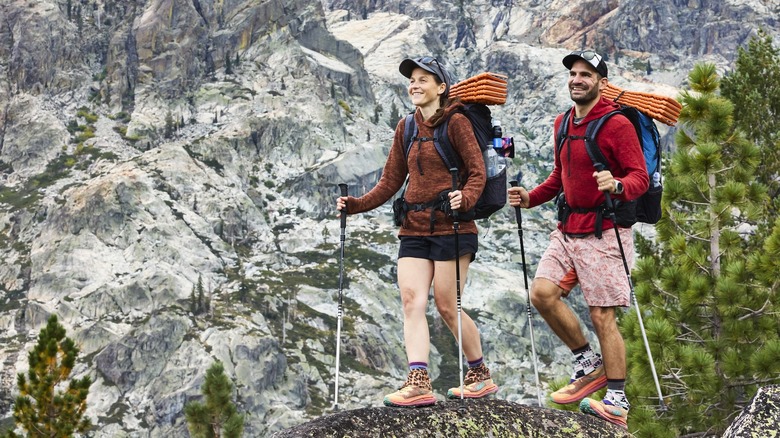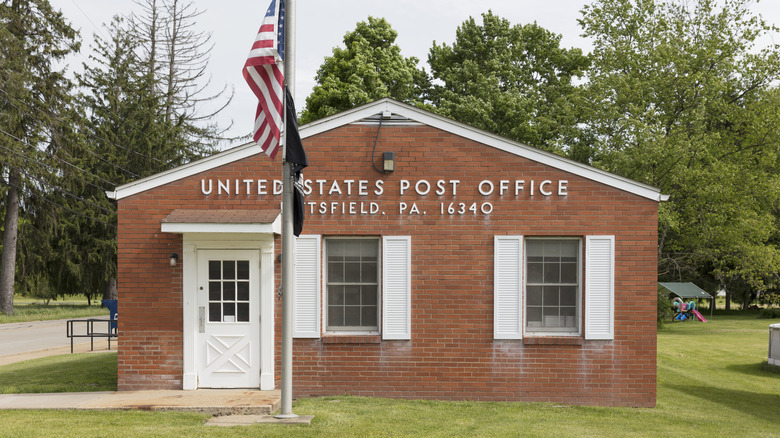15 Expert Tips For Eating Well On The Trail
In the many years since humanity first discovered fire, the joy of cooking has not abated. If anything, it has only strengthened as the world has blossomed in thousands of cultures. But while a bubbling bot of beans and rice or chicken noodle soup is as comforting as ever on the range at home, there's something especially wonderful about good food out in the wilderness.
At least, that's what Renee Miller and Tim Beissinger believe. The power duo behind @thruhikers and authors of "Thruhikers: A Guide to Life on the Trail" believe that the culinary experience is just as important while backpacking as it is at any other time in life. Accordingly, their new book is jam-packed with practical insights about pre-hike meal planning, expert dehydrated meal strategies, lightweight packing, food storage en route, troubleshooting, and more.
Whether you're a weekend overnighter or a long-distance hiker a la Miller and Beissinger (who have hiked more than 10,000 miles together!), these are the kinds of tips you need to fuel your body and spirit during the grueling days that comprise any backpacking trip. Chowhound was lucky enough to sit down with the pair and mine their best intel about eating well on the trail.
1. Redefine lightweight
Miller and Beissinger have moved far beyond the world of the MRE (meal ready-to-eat) or the canned cheeseburger. Their expert food prep strategies focus aim to achieve two main goals: greater nutrition in a smaller payload. This is, they say, one of the most important aspects of backpacking to reframe. "Lightweight doesn't simply mean easy to carry," they explain. "It means not a lot of weight for the number of calories it contains."
Dehydrating or freeze-drying food is the go-to hack for lightening the load. "The less water your food contains, the less it weighs." As a quick aside, freeze-drying and dehydrating are not the same process. They use different applications of physics, but both preserve food well.
This advice pertains to snacks as well as meals. "When we're packing for a long stretch between resupply towns, we make sure that our snacks are as light as possible. For bars, Skratch Labs makes some that taste amazing and are very lightweight. Nuts tend to have a high number of calories per ounce too." The two even make their own snacks, such as dehydrated bean dip and crackers. "It's great to munch on when we get sick of regular bars," they add.
2. Carry salt and sauce packets
"When it comes to improving store-bought freeze-dried meals, carrying a little bit of extra salt or sauce packets adds little weight to your pack, but definitely improves the taste of bland food," Miller and Beissinger advise. Soy sauce, duck sauce, ketchup, seasoned salt, pepper, and anything else you might collect from takeout are all fair game. You can also consider storing spices in Tic-Tac containers or shampoo bottles, both of which are lightweight and will contain smells that might attract animals.
Worried about the sodium from all that extra seasoning? Don't be, they say: "After a long day of hiking and sweating, your body is probably more drained of salt than usual, so food that is saltier than you'd enjoy at home can be good for you." For those willing to carry a few extra ounces (and maybe aren't traveling as far), you might consider salty upgrades such as bacon bits, a luxury that becomes easier to bear if you hike with others.
3. Know your high-protein foods
Your body desperately needs protein on the trail, so it's critical to know which foods can offer the most. Meat, nuts, and beans are the best. Some nuts are better than others, the Thruhikers say, pointing out that cashews and sunflower seeds are some of the highest in protein. Peanut butter is also a gold mine of fat and protein, and it can be had in lightweight individual serving packets if you like it as a snack.
The expert hikers also focus on max protein in the meals they dehydrate at home. They lean heavily on beans, which are packed with nutrients, fiber, and calories. Other recipes they love include curry rice and cold-soaked shepherd's pie. These are good starting places for vegetarians and carnivores alike.
If you do like meat, it's always a safe bet. Many backpackers who are traveling shorter distances enjoy dried sausages or canned foods such as SPAM. However, those are heavy, so long-distance, weight-conscious meat options usually center on dehydrated meats and fish as well as jerky.
4. Approach plant-based protein carefully
A common complaint among vegetarian backpackers is that it's hard to get as many calories as meat-eaters can, so you need to target your proteins carefully. Moreover, plant-based protein is the hardest thing to find at resupply stops along your hike, the authors explain, so if you need it, you should focus on it while planning and packing.
Once again, the couple says, it's beans to the rescue. In addition to being protein- and nutrient-packed, beans dehydrate easily. Note that freeze-dried beans are very hard to find along the trail, though, so target those ahead of time rather than planning to pick them up along the way. "We usually dehydrate lots of beans ahead of time and mail them to ourselves along the trail," they explain, "either packaged into recipes we've prepared ahead of time, or in a bag of their own to supplement other meals with." The only exception is New Mexico, which is apparently a dried-bean bonanza.
5. Know your starches
Starches are mega-important. While often decried as the root of all dietary evil, that's not the case at all (and even if it were, the backcountry is hardly the place for an Atkins approach). Starches are, in fact, the body's main energy source, complex carbohydrates that your system breaks down into usable glucose while working hard.
Plenty of starches make for suitable trail food, and there are some ingredients you can get pretty much anywhere, no matter how small or remote the trailside town: oats, granola, instant rice, and instant potatoes. If you're going to be on the trail for a long period of time, you can plan your meals around these and add in foods you've brought to spice things up.
If you prefer a more well-rounded flavor profile and don't mind freeze-dried food, you can find plenty of starch in ready-made meals such as oatmeal, rice, and pasta. However, Miller and Beissinger say, that's not the right approach for them: "We have yet to find one that we like consistently, or that is affordable. This is why we dehydrate and freeze-dry our own food. It tastes much better, and it's far less expensive."
6. Be skeptical of freeze-dried meal serving sizes
While freeze-dried meals are treated as the easiest approach to trail dinners, you have to watch out for the serving amounts. Most packages underestimate how many people they will feed, the Thruhikers say, sometimes vastly. They advise you plan your meals according to calories rather than servings. "Meals with approximately 500 calories per serving are usually filling, but for days that are longer than usual we like to bump that up to about 750 and supplement with extra snacks and dessert."
Also, beware that not all freeze-dried meals represent a single serving. Some contain two, so if you're not sharing with someone, you'll have to figure out how to split it up. The easiest way is to pre-plan by putting a serving each into two Mylar or other containers. You can skip the headache, however, by simply making your own meals ahead of time.
7. Learn to dehydrate your own meals
The above advice applies whether you cook your own meals ahead of time or not. However, if you're ready to take things to the next level, then you might want to experiment with dehydrating your own food so you can tailor them to your exact needs. The good news is, you can dehydrate pretty much any cooked food, from fresh-caught salmon to chili con carne, as long as you know what you're doing.
For their part, Miller and Beissinger don't like packaged freeze-dried meals. They find them boring, inconsistent, and expensive. Instead, they pre and dehydrate their own food, which offers lots more variety as well as cost-savings. "Learning how to dehydrate our own meals was a game-changer for leveling up taste on the trail," they say. "By making food on our own, we can ensure it is packed with flavor and tastes almost as good as it does back home."
Happily, the investment cost isn't that high; while you can spend as much as you like on a fancy machine, you can get a perfectly good one for between $100 and $200. Even better, the learning curve is shallow, with plenty of recipes online and idiot-proof instruction manuals.
Today, they rely almost exclusively on their own cooking. "We usually dehydrate (or freeze-dry) and assemble all of our dinners ahead of time. Dinners and plant-based protein are the hardest to find in small resupply towns along the trail. We also dehydrate extra beans, veggies, and fruit to supplement the rest of our diets."
8. Test your recipes ahead of time
Learning to make great food on the trail might take some time. This is especially true since the rules for cooking one- or two-person camping meals, especially at higher elevations, are different than those for cooking on your stove at home. However, once you learn the basics, you're golden.
"The perfect trail meal is filling, balanced, and enjoyable to eat," say Miller and Beissinger. "You should test your recipes ahead of time, whether you're simply spicing up a freeze-dried meal or dehydrating and packaging your own trail food." Make sure it offers enough calories, feels satisfying, is easy on the stomach, and you like it. Adjust seasonings as needed while experimenting so that you know what to bring with you on the trail.
In general, they say, the same rules apply to eating on the trail as eating at home. "Make sure all of your meals are balanced and include starch (e.g. rice, potatoes, noodles), protein (e.g. dehydrated beans, dehydrated meats, or nuts), nutrients (dehydrated vegetables), and flavor."
9. Dehydrate fruits and veggies
Fruits and vegetables are two of the best ways to add more flavor and nutrients to your diet during a long, hard hike. They are also two of the hardest things to mix into your daily ration rotation. For that reason, getting more produce on the trail is a common desire for backpackers.
This is a problem they face as well, the Thruhikers say. "You can buy lots of weight-conscious, healthy foods along the trail, such as oats and rice. However, you won't find a variety of dehydrated fruits and vegetables." As they're irreplaceable for flavor and food interest, it's important you find workarounds. Once again, home prep is your best friend.
Many backpackers miss the fact that you don't have to prep entire meals in order to get more fruits and veggies; you can prep and bag them on their own. If you generally enjoy freeze-dried meals (or just can't overlook the convenience factor), that's fine. Bring them, but also bring dried your veggies to add to lunch and dinner: tomatoes, peppers, and broccoli are all excellent additions. Add dried fruits like berries and bananas to breakfast and dessert.
You can even enjoy dried fruits and vegetables as a snack. Think dehydrated apple rings, banana slices, strawberries, and pears if you like the sweet stuff. For those who love munching on veggies, try dehydrated zucchini and carrot chips.
10. Balance go-to meals with variety
Although they cook many different meals to accommodate their on-the-trail needs, Miller and Beissinger have a few go-tos. These include peanut butter pasta, chili, and curry rice. They know that each of these recipes has the right balance of starch, protein, nutrients, and flavor.
"Variety is key," they instruct. "On long trips, we make sure to rotate through at least 10 to 12 different dinner recipes so that we don't get bored of anything." At the heart of their ethic is the idea that food should be nourishing to both the body and the spirit, and switching up your meals can help you achieve that.
But, they add, "Keep in mind that most backpackers will need thousands more calories daily than at home." Make sure to do your online research and plan for the right amount of calories; it's a bad idea to eat too little. You may face irritability, indigestion, and loss of energy that can be dangerous while out in the wilderness.
11. Cook more than one meal a day
It's tempting to get where you're going as quickly as possible, but that's not the most nutritious approach. Instead, cook more than one meal a day to minimize your reliance on snacking along the way. Using just-add-water ingredients can speed along a breakfast or lunch if you don't want to linger.
"For breakfast and lunch, we usually pick up base ingredients like oats, granola, instant rice, and instant potatoes along the way, and assemble simple meals by adding our dehydrated beans and veggies to these base ingredients," Miller and Beissinger say. "Don't eat the same thing every day. Resist the urge to over-snack on the simplest trail foods, like chips and candy, by setting aside time to spend cooking and enjoying a few nutritious meals each day."
12. Treat fishing and foraging only as fun
Picking berries on the trail is fun. So is fishing, especially considering it can provide a lot of bonus calories. If you're hiking during the right times of year, foraging is a lovely way to add interest and variety to your meal plan. However, you should never plan this in as part of your diet, Miller and Beissinger say, since you can't rely on the trail to provide you with the food you need when you need it. "We never know if they will or won't be easy to find," they caution.
That's not to say you shouldn't enjoy a hobby while on the trail, though: "For people who enjoy fishing, if the extra weight of a fishing pole isn't a burden and there will be enough not-hiking time to do it, it can be fun and maybe it will provide some 'bonus calories.'" No matter what, always make sure you're foraging responsibly: Use everything you take, leave protected species alone, leave the roots and base of mushrooms intact, and leave no trace. And, of course, make sure you are good and certain a food is safe before you eat it.
13. Give yourself treats
Treats are necessary, both spiritually and as a way of getting a few extra calories where needed. "We like to carry a little bit of candy to munch a few pieces of after dinner (often Swedish Fish or Skittles)," say the Thruhikers. "We also often have hot apple cider after dinner." Hot chocolate is another delicious, lightweight treat to bring.
There is a caveat, however. Miller and Beissinger note that although such treats have a high calorie-to-weight ratio (e.g. many calories for not a lot of weight and therefore good bang for your buck), those calories are pretty much pure sugar. "They don't last long. Still, carrying them and enjoying them each night can be a nice pick-me-up after a hard day of hiking." If you want to mix up your sweet treat, you might try mixing sour candy into your dried fruit, instead.
14. Plan for the day ahead
Rather than rummage through your pack every time you need something to eat, make sure to pull out everything you want to eat on the trail that day before you pack up in the morning. Put this food in the side pockets or hip straps of your backpack for easy access so that you don't have to stop every time you get snacky — which, as any thru-hiker can tell you, is seriously all the time.
"We also take lunch out of our food bag and put it into the outer pocket on one of our backpacks," Miller and Beissinger add. "This approach means we don't have to stop and dig through our backpacks at all during the day." In addition to your lunch, easy snack items to keep on hand include nuts and nut butter, dried fruit, energy bars, jerky, tuna pouches, and chocolate.
15. Send resupply boxes up to 30 days in advance
"For trips up to about a week in length, it's feasible to carry all of your food for the entire trip," Miller and Beissinger say. "For longer trips, it's necessary to resupply along the route." That means either purchasing it along the way or mailing it to yourself before you leave for pickup at a later time. And since lightweight dehydrated food can be limited along many trails, it's smart to mail it on ahead. Luckily, most U.S. and Canadian post offices will hold your boxes for about a month.
To accurately predict your food supply, you will need to approximate how many days it will take you to get from one resupply stop to the next, then package the correct amount of food. If you must resupply on the trail, the couple warns, beware that you may not find much more than ramen, peanut butter, chips, and instant potatoes. Better than nothing, but probably not better than planning ahead.
